1. John D. Rockefeller
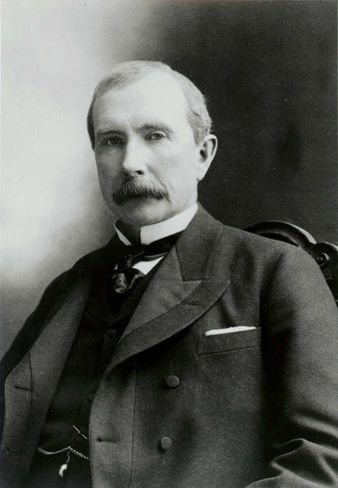
As a young man, John Davison Rockefeller said that his two greatest ambitions were to make $100,000 and live to be 100. He died two months shy of his 98th birthday, but boy did he make good on the first goal.
Rockefeller wasn't born to a rich family. His father, William Avery "Big Bill" Rockefeller was a shiftless man who spent most of his times thinking up schemes to avoid actual work! Nevertheless, thanks to the guidance of his mom Eliza - a homemaker and devout Baptist - John D. grew up to be a hardworking man.
Rockefeller started out in business as a wholesale grocer and went on to found Standard Oil, which through shrewd business decisions and some say predatory and illegal practices, grew to be a gargantuan monopoly. At its peak, Standard Oil had about 90% of the market for refined oil (kerosene) in the United States (in the early days of Standard Oil, gasoline wasn't an important component of the oil industry - indeed, gasoline produced by the refineries were dumped in rivers because they were considered useless!)
In 1911, the US Supreme Court declared Standard Oil a monopoly under the Sherman Antitrust Act and ordered it to be broken up into 34 independent companies with different boards of directors. By that time, Rockefeller had long since retired from the company but still held a large percentage of shares. Ironically, the busting up of Standard Oil unlocked share values and his fortunes doubled overnight.
Rockefeller got his first job at 16 as a bookkeeper. In a move that portended his lifelong commitment to philanthropy, he tithed 10% of his income - from his first paycheck on - to charity. As his wealth grew, so did his charitable contributions. When he died in 1937, Rockefeller had given away half of his amassed fortune, and established philanthropic foundations to continue giving after his death.
2. Andrew Carnegie
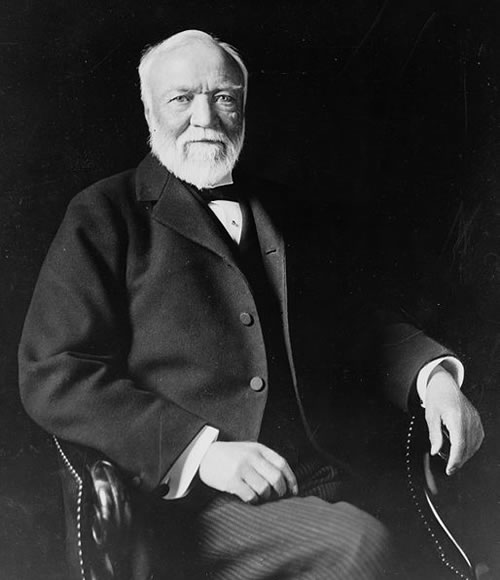
Peak wealth: $298.3 billion. Age at peak wealth: 68
Andrew Carnegie immigrated as a young child to Pittsburgh from Scotland and began working at 13 years old as a bobbin boy in a textile mill. He changed spools of threads for 12 hours a day, 6 days a week for a weekly wage of $2. At 16 years old, Carnegie became a telegraph messenger boy, and soon after was promoted to be a telegraph operator.
Carnegie became a personal assistant to Thomas Scott, superintendent of the Pennsylvania Railroad Company and learned the ins and outs of the railroad business. It was Carnegie who invented a brutally efficient way to clear the tracks after a railway accident: by burning the railroad car!
When he was 20, Carnegie mortgaged his mother's house and made his first gutsy investment of $500 for 10 shares of the Adams Express company - sort of the Fed Ex delivery company of the 1800s - and was handsomely rewarded. He then invested in a company making sleeping cars for the railway. By the time he was 30, Carnegie had expanded his investments to iron works, steamers, railroads, and oil well.
But the real money came from steel. In the late 1880s, Carnegie built his steel empire to become the world's largest manufacturer of steel rails, pig iron, and coke.
In 1901, at the age of 66, Carnegie retired by selling his shares to John Pierpont Morgan for more than $225 million (a large sum today and an astounding amount of money back then) in form of gold-bonds. When the bonds were delivered, a special vault had to be built to physically house them!
Carnegie was big proponent of philanthropy - in a famous 1889 essay "The Gospel of Wealth," he wrote that wealth should be distributed to promote welfare of other people and enrich society. True to his words, Carnegie gave away more than $350 million or almost 90% of his fortune.
Note: At the end of the Spanish American War, the United States bought the Philippines from Spain for $20 million. Carnegie was appalled at what he perceived to be an imperialist move and personally offered $20 million to the Philippines so it could buy its independence from the US (they didn't take him up on his offer).
3. Nicholas II of Russia
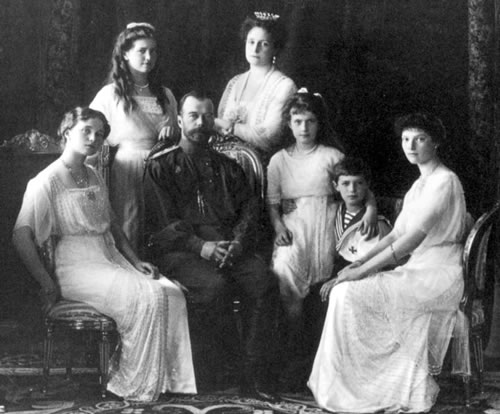
The last Russian Imperial family
Nicholas II of Russia (born Nikolai Aleksandrovich Romanov) was the last Tsar of Russia. He ruled (badly) from 1894 until he was forced to abdicate in the Russian Revolution of 1917 by the Bolsheviks. His reign was marked with antisemitic pogroms, a crushing defeat by Japan in the Russo-Japanese War, revolutions, internal unrests their bloody suppressions, undue influence by the mystic Rasputin and World War I. A year after he was deposed, Nicholas and his entire family were executed by Lenin's order.
The life of the last tsar of Russia was filled with fascinating myths, legends, and history - and readers interested in it are encouraged to read more about Nicholas II and the Romanovs. Suffice it to say that Nicholas II became the third richest man in history the old fashioned way: he inherited his wealth.
4. William Henry Vanderbilt
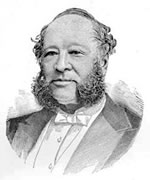 Peak wealth: $231.6 billion. Age at peak wealth: 64
Peak wealth: $231.6 billion. Age at peak wealth: 64William Henry Vanderbilt had a pretty good start in life: he inherited nearly $100 million from his father, the railroad mogul Cornelius "The Commodore" Vanderbilt (if you want to read a rags to riches story, Cornelius' is pretty good - see below).
William Vanderbilt was groomed by his father to be a businessman (at times harshly - the imperious and domineering Cornelius liked to call his eldest son a "blockhead," "blatherskite," "sucker," and "good for nothing") and William turned out to be quite an able businessman. He expanded the family's railroad empire and thus the family fortune, finally earning his father's respect and friendship.
When William died in 1885, he was the richest man in the world.
5. Osman Ali Khan, Asaf Jah VII
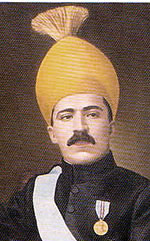 Peak wealth: $210.8 billion. Age at peak wealth: 50
Peak wealth: $210.8 billion. Age at peak wealth: 50Asaf Jah VII (whose given name was Osman Ali Khan Bahadur) was the last Nizam or ruler of the Princely State of Hyderabad and Berar, before it was invaded and annexed by India in 1948.
By most accounts, "His Exalted Highness" the Nizam of Hyderabad was a benevolent ruler who promoted education, science and development. He spent about one-tenth of his Principality's budget on education, and even made primary education compulsory and free for the poor. In his 37-year rule, Hyderabad witnessed the introduction of electricity, railways, roads, and other development projects.
In 1937, Asaf Jah VII was on the cover of Time Magazine, labeled as the richest man in the world.










